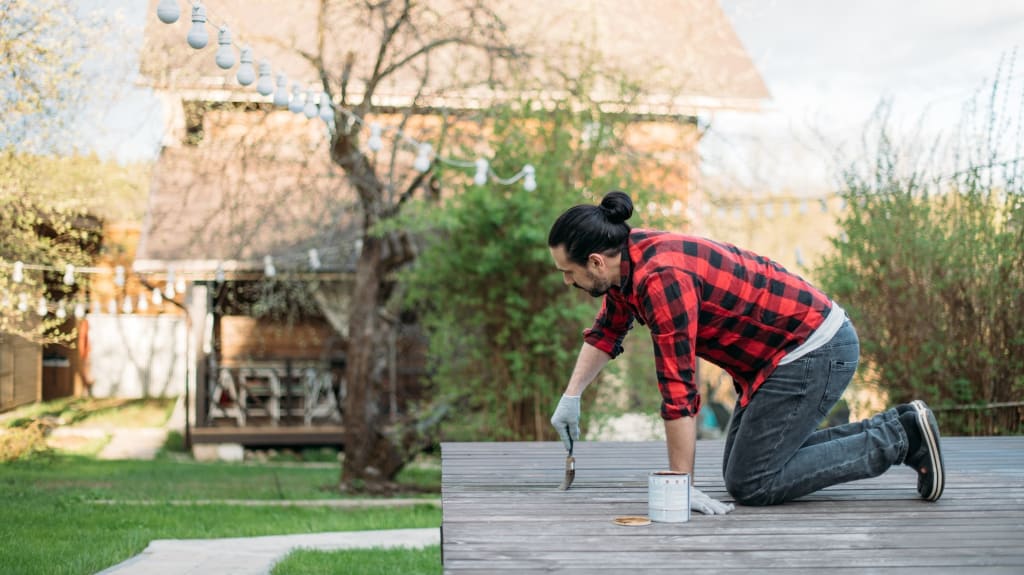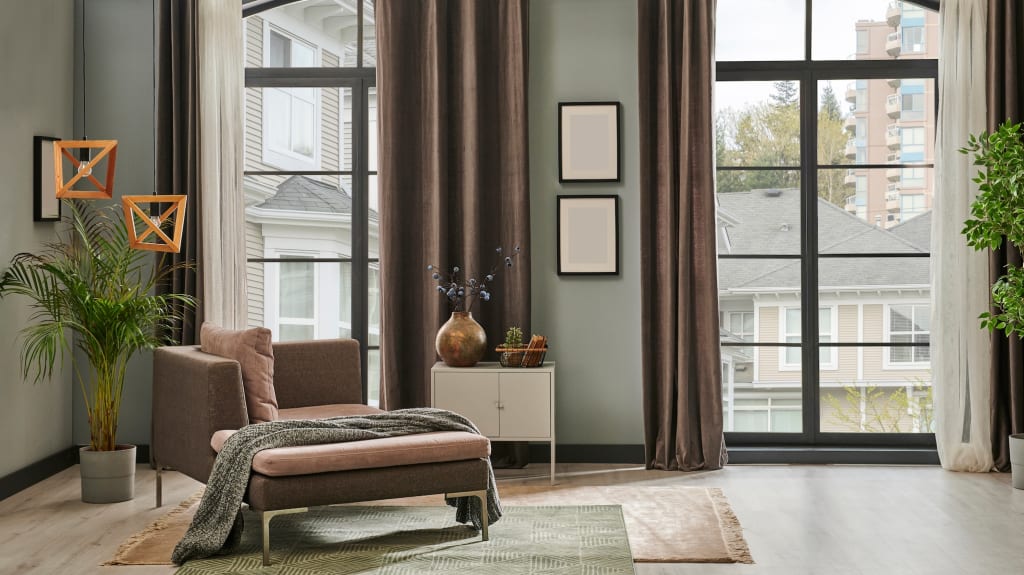It provides protection from the elements but may need to be restored to maintain its integrity. Yes, we’re talking about the roof. When it comes to restoring your roof, the choice of materials is of the utmost importance. To help you make the right decision, let’s explore the many options on the market so that your renovated roof is as attractive as it is durable.
How do I know if my roof needs restoration?

Before you start repairing your roof, it’s important to determine whether it’s showing signs of deterioration that require attention. Here are the main indicators that a roof could use a little TLC:
Water infiltration
If a certain amount of water is seeping through the roof, there’s a problem. First, make sure the leak is actually coming from the roof and not from the gutters you forgot to empty!
You may have damaged shingles (or any other material) that are letting water through. In that case, you will need to replace them to prevent further damage.
Did you know?
You need to inspect your attic regularly to check for water infiltration. Do the summer and spring inspections on a rainy day, then choose a freezing period for the winter inspection.
Mould
Roof deterioration can cause structural damage as moisture seeps into the house (article available in French only). It can also lead to mould and wood rot, which in turn affects air quality for the occupants.
To check whether the roof cladding needs to be replaced because of the presence of mould, a visual inspection of the interior and exterior of the property is a must. Look for obvious roof damage (such as damaged tiles or shingles), as well as damp stains and musty smells. As mentioned above, it is highly recommended to examine attics or roof spaces for water infiltration.

Damaged materials
A damaged roof compromises its impermeability. This can also lead to heat loss during the winter and overheating during the summer. This affects the home’s energy efficiency and has a direct impact on your electricity bill. (article available in French only) So take the time to spot any damage, cracks, water spots, or missing tiles.
A new roof or one in good condition also protects the property’s appearance and, by the same token, its value. If you want to put your home up for sale, you should make sure that this criterion is met. A well-maintained roof attracts more potential buyers.
Are you thinking of selling your property yourself or with the help of a real estate broker? Refer to EspaceProprio’s advisory service for assistance tailored to your needs.
Contact the advisory team
Conventional materials
A number of materials are commonly used in roof replacement. Each has its advantages and disadvantages in terms of cost, durability, and appearance.
Asphalt shingle roofing

Among the most common choices for residential roofs is the asphalt shingle roof. This material is composed of a fibrous base, impregnated with bitumen, and covered with mineral granules.
Advantages
Cost-effective and versatile Asphalt shingles offer excellent value for the money, making them affordable for many homeowners. The wide range of styles and colours can be adapted to a variety of architectural designs, allowing you to personalize the aesthetic appearance of your roof.
Easy to install and to restore Simple installation and repair reduce labour costs, making them a practical option. Minor repairs can also be carried out to extend their useful life.
Weather-resistant Their ability to withstand the elements helps reinforce the strength of the roof’s structure.
Disadvantages
Susceptible to mould Caution: periodic cleaning of the shingles is necessary to prevent mould growth as they are vulnerable to it (especially in humid environments). You can do it yourself every three years or so (or whenever you feel it’s necessary), or you can leave it to a professional.
Harmful to the environment Manufacturing and disposing of these tiles has a considerable ecological impact. Their manufacture requires the extraction of raw materials (oil, sand, and gravel), not to mention the fact that used shingles often end up in landfills, harming the environment.
Metal roofing

Another must-have in the world of roofs: those built from various metals (steel, aluminum, or zinc). They are described as sturdy and easy to maintain.
Advantages
Durable and resistant Metal is particularly resistant to the elements, and is renowned for its longevity. It provides additional protection against the elements such as fire, mildew, insects, and rot.
Eco-friendly Good news: metal is recyclable! Depending on the type of material chosen, this reduces the environmental footprint of the roof covering.
Disadvantages
Noisy The sound impact of precipitation on the roof during heavy rain or hail can be a nuisance.
Expensive Some higher quality (and more resistant) metals are much more expensive. These include galvanized steel and aluminum.
TPO and EPDM for flat roofs
There are a few types of cladding for flat roofs, such as thermoplastic polyolefin (TPO) and synthetic rubber (EPDM).
TPO

Available in multiple colours (including white, effective against heat island effects), this recyclable material provides good UV and weather resistance. It has a lifespan of approximately 25 years but will discolour somewhat over time. Nonetheless, thanks to its ecological properties, it is becoming increasingly popular.
TPO can be recovered and transformed into new materials.
It contains no chlorine or plasticizers, making it less harmful to the environment and to us humans.
The white version minimizes heat absorption, helping to reduce air conditioning requirements.
EPDM

Synthetic rubber, or ethylene-propylene-diene monomer (EPDM), provides good impermeability and is also fairly resistant to temperature variations. Ideal for flat or low-slope roofs, it has an excellent useful life of over 30 years.
It does, however, require frequent inspection for cracks. It is gradually being replaced by TPO, which is more environmentally friendly.
Increasingly popular materials
Climate change is forcing us to rethink our roofing processes. Increasingly frequent high winds and thunderstorms are making it necessary to install cladding capable of withstanding the elements.
In this context, it is essential to use weather-resistant materials.
Green roof

Green roofs offer many advantages for homeowners and the community alike. This type of green roof promotes biodiversity by providing a habitat for plants and insects, as well as absorbing water. It even reduces the risk of flooding during heavy rains.
The installation of a green roof is in line with a sustainable development approach, and protects the roof membrane thanks to the vegetation that covers it, making it all the more resistant. Our planet could certainly do with some extra green space!
Solar roof

The solar roof (or photovoltaic roof) integrates the solar panels directly into the structure. This solution transforms the sun’s rays into electricity to power your home. Installing solar panels also ensures effective protection against Mother Nature’s vagaries, as they are extremely robust.
A solar roof may be an expensive option, but it comes with an average 25-year warranty, giving you peace of mind.
White roof

Because of their ability to limit the heat absorbed by the building, white roofs (such as TPO or white-painted roofs) are gaining in popularity. And by reflecting a large amount of the sun’s rays, these roofs help reduce the need for air conditioning during the warmer months. Say hello to energy savings and a more sustainable future!
Less need for air conditioning means fewer greenhouse gas emissions from electricity generation. In short, opting for a white roof is a step in the right direction in the fight to mitigate the effects of global warming.
To learn more about the costs of the various materials, check out this RenoAssistance article:
Roof Replacement Costs
When should you restore your roof?
When is the best time to restore a roof? Spring is often the best time of year, as it is also a good time to clean and inspect the roof. Signs of damage can be detected and quickly resolved to avoid more serious problems.
Another significant advantage is moderate temperatures and relatively low humidity. This makes it easier for contractors to get the job done more efficiently.
So, how long does it take to restore a roof? It all depends on the extent of the repair work and the type of roof. For a residential project, you should allow one or two days, while a commercial project takes a week at most.
Our tips for restoring a roof

Don’t wait until the last minute
If you want to replace your old roof, start planning this renovation project as soon as possible. Professionals in this field are very busy during the summer, so you’ll need to book a time slot earlier rather than later.
Call in the professionals
Is your roof nearing the end of its useful life? You need qualified roofers to make sure your property is perfectly impermeable. RenoAssistance can put you in touch with professionals who know exactly what to do and who follow the highest industry standards.
Get your quotes today and let RenoAssistance’s Verified Contractors help you protect your home!
Replace a roof



